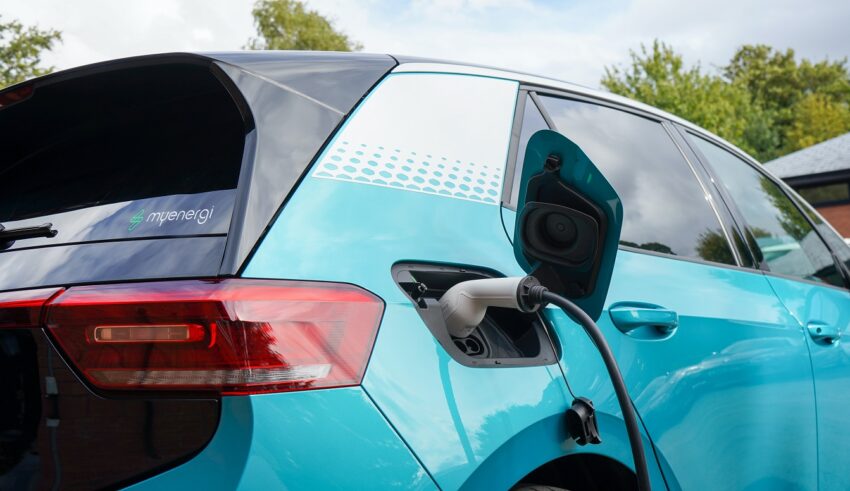AG INSIGHT | 06/12/2017
Low carbon mobility: a green growth opportunity

Jonathan Murray, Policy and Operations Director at LowCVP, reviews the recent Government policy objectives that have delivered environmental benefits and growth within the automotive industry.
This blog is part of series published in the lead up to the launch of an Aldersgate Group commissioned report by BuroHappold Engineering ‘Help or Hindrance? Environmental regulations and competitiveness’.
Over the last decade Government and industry have successfully navigated a path that has delivered environmental benefits and growth, based on synergies between these policy objectives. Investment in low carbon vehicle technology development and production has helped drive the automotive sector to heights not seen since the seventies. It’s been gratifying to work with stakeholders helping this to become a reality at the Low Carbon Vehicle Partnership (LowCVP) but there is plenty more to do.
The Government’s Industrial Strategy seeks to continue this trend, identifying the future of mobility as one of four ‘Grand Challenges’ facing Britain in the 21st Century. The Strategy anticipates a “future of new mobility services, increased autonomy, journey sharing and a blurring of the distinctions between private and public transport”. It includes commitments to seize the opportunities and address the challenges of moving from hydrocarbon to zero emission vehicles.
There is money to support the Strategy too: a new £400m Charging Infrastructure Investment Fund (£200m from the government to be matched by private investors); £100m new funding for the plug-in car grant. It also provides a little more detail about £40m R&D funding (to be matched by industry) for new charging technologies including on-street and wireless projects.
But there is a recognition that its not just money that will deliver future low carbon mobility. The Strategy includes a new promise to update building regulations (after the Grenfell Review) to mandate that all new residential developments must contain the enabling cabling for charge-points in new homes.
The Government says that it will build on these commitments (and earlier promises including the Faraday Battery Institute and the Office for Low Emission Vehicles programme) and in the coming months will publish a strategy on government support for the transition to zero emission road transport. The strategy will aim to ensure that the UK continues to be a world leader in the development, manufacture and use of low emission vehicles.
However, alongside the Clean Growth Strategy, Air Quality Plan and recent Budget, the recent Industrial Strategy (plus details promised soon on a strategy for zero emissions road transport) could create the ‘perfect policy storm’ in 2018 and precipitate a step change towards cleaner vehicles and fuels, and how we use them.
The industrial and environmental imperatives have been clearly stated, providing great opportunities for business and other entrepreneurial stakeholders to embrace and lead this change. We at the LowCVP, intend to continue helping Government and stakeholders, by working together in partnership. 2018 looks set to be an exciting year!
The Industrial Strategy anticipates the arrival of new forms of ‘moblity services’ which will encompass autonomy and include new forms of sharing which will blur lines between public and private transport. In addition, the Strategy commits to explore ways to use data to accelerate development of new mobility services and enable the more effective operation of our transport system.
On energy policy, the Strategy anticipates a growing electrification of the UK economy, powered by renewable energy. It includes a short section on the introduction of ‘smart systems’ which can link energy supply, storage and use, and join up power, heating and transport to increase efficiency dramatically. This aligns with a Sector Deal with the automotive sector which focuses on opportunities in the transition to electric, connected and autonomous vehicles.
Electrification of transport, we believe, is an area of genuine competitive advantage to the UK and is perfectly placed to take advantage of emerging markets in ultra-low emission vehicles. The UK has already established the infrastructure required to secure these opportunities. The Advanced Propulsion Centre, is already supporting the development of low carbon technologies that will form the basis of future vehicle supply chains.
The Automotive Sector Deal also includes commitments on connected & autonomous vehicles and to the development of a low emission UK supply chain which aims to further raise the level of UK content in nationally produced vehicles to 50% by 2022 (which has grown from 36% in 2011 to 44% in 2016). The programme will provide bespoke training and enhanced business processes to help build the vertically integrated supply chain we need in the UK to manufacture the future generation of vehicles at volume.
Underlying the Industrial Strategy, the Government says, is the fact that the world is undergoing a ‘fourth industrial revolution’ which it of a scale, speed and complexity that is unprecedented. The first industrial revolution mechanised production using water and steam power; the second created mass production using electric power; the third automated production using electronics and information technology. This fourth revolution, is characterised by a fusion of technologies that are blurring the lines between the physical, digital and biological worlds. It will disrupt nearly every sector in every country, creating new opportunities and challenges for people, places and businesses to which we must respond.
Along with these growth opportunities we need to secure environmental benefits in the whole life cycle of goods and services. This poses challenges for environmental regulation and standards which needs to keep pace with the industrial opportunities. However, if there is a lesson to be learned from the last decade, it is that good environmental regulations are a benefit not a hindrance.



